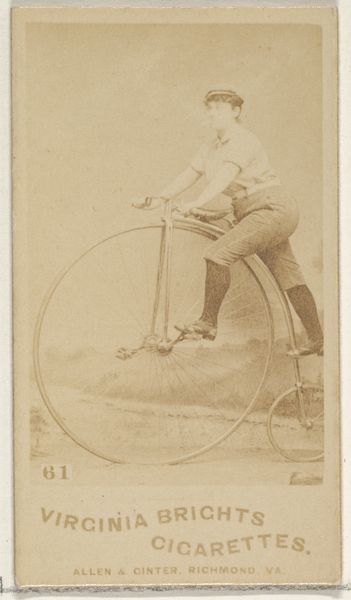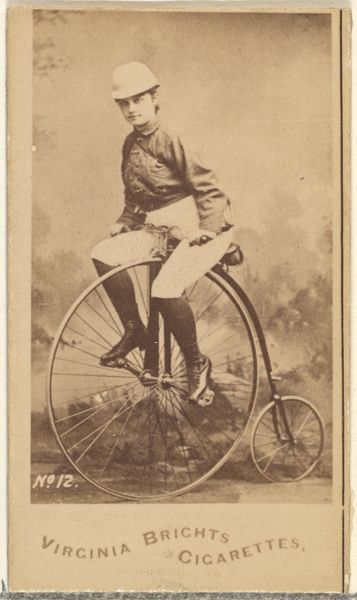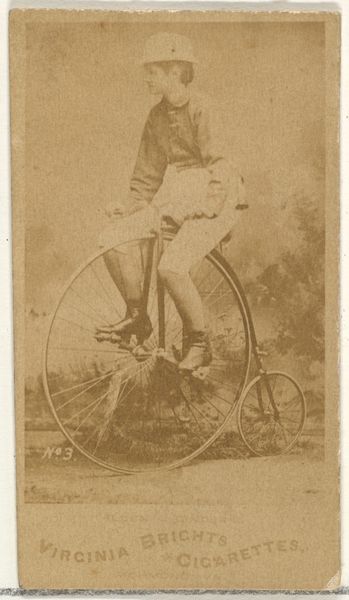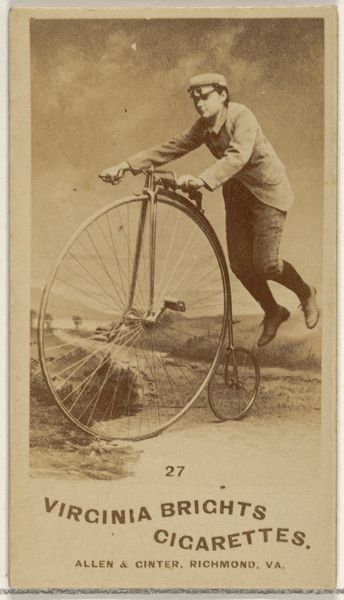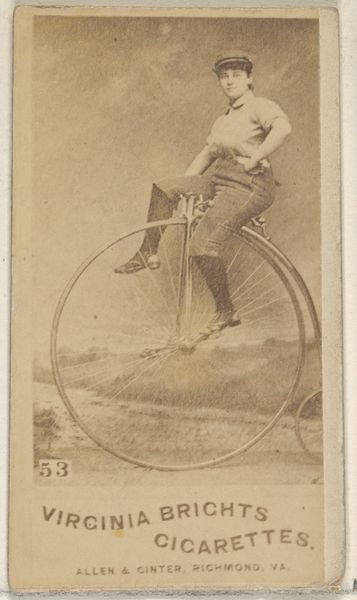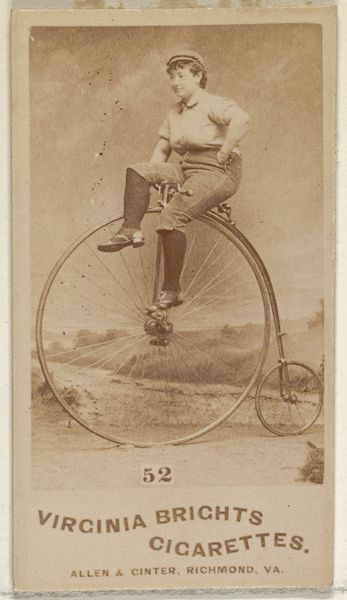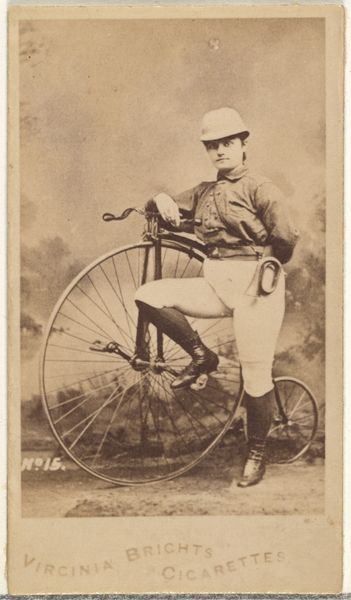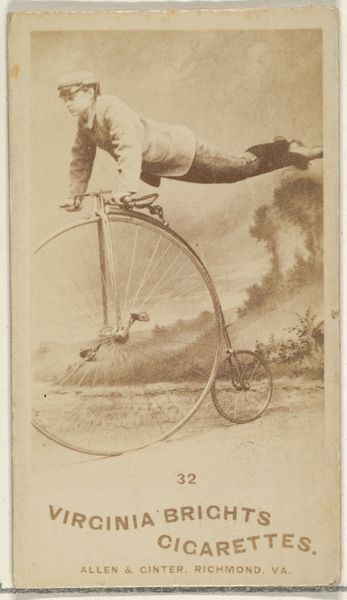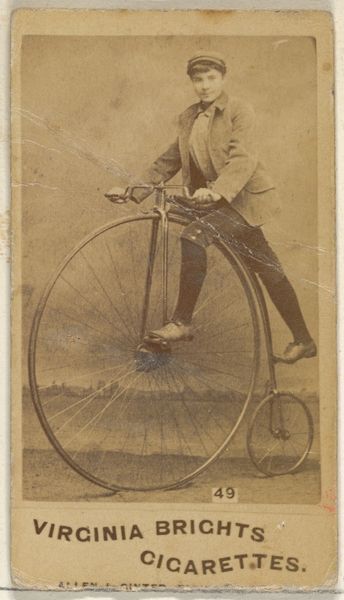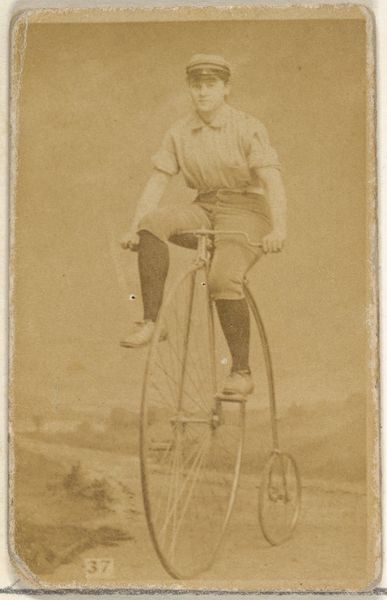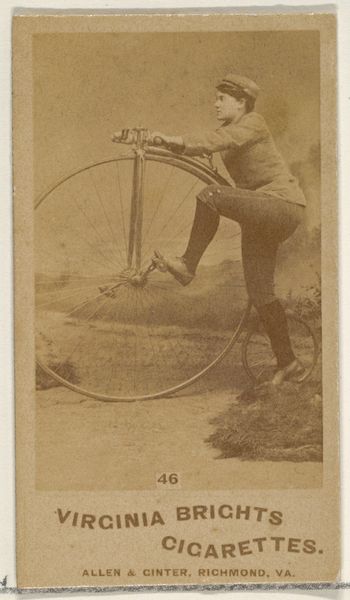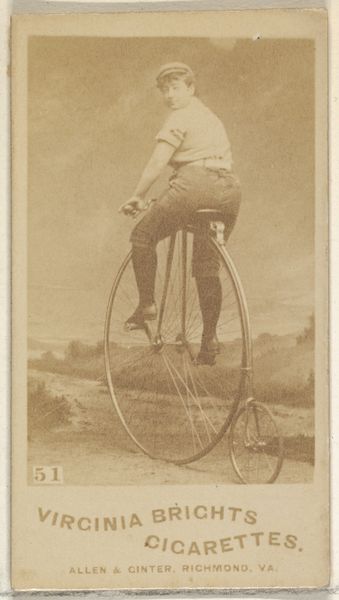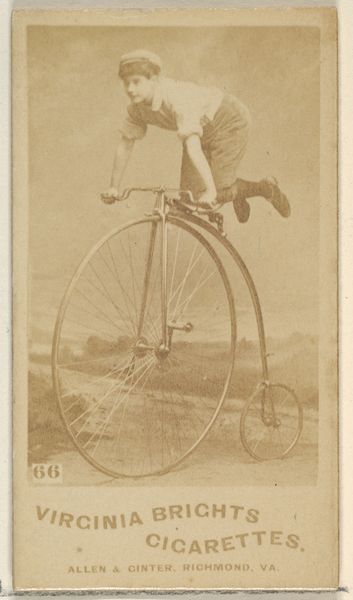
Card 16, from the Girl Cyclists series (N49) for Virginia Brights Cigarettes 1887
0:00
0:00
print, photography, gelatin-silver-print
#
portrait
# print
#
figuration
#
photography
#
gelatin-silver-print
Dimensions: Sheet: 2 3/4 x 1 3/8 in. (7 x 3.5 cm)
Copyright: Public Domain
Editor: So this is Card 16 from the Girl Cyclists series by Allen & Ginter, printed in 1887. It's a small, sepia-toned photograph of a woman perched rather precariously on an enormous bicycle! It's striking how athletic and… modern she seems, despite the old-fashioned clothes. What can you tell me about its place in art history? Curator: It's fascinating to see how images like this, initially produced as commercial ephemera for cigarette cards, participate in broader conversations about gender roles and consumer culture. This image captures a moment when the "New Woman" was emerging, and cycling became a symbol of female liberation and independence. Consider how this card, distributed with Virginia Brights Cigarettes, helped normalize this image to the broader public, potentially influencing their perceptions of women's capabilities and societal roles. Editor: So, was it considered radical at the time? I mean, was there a political message? Curator: It's important to understand that commercial images rarely carry explicit political statements, yet they wield soft power by gradually shifting societal norms and tastes. This particular image may have subtly challenged conventional portrayals of women as delicate and domestic. And the distribution method… inserted into cigarette packs for mostly male consumption… well, who was it meant to persuade, or perhaps even titillate? It's that complex interplay of marketing, gender and freedom. Do you see anything else in the card? Editor: It's like a miniature act of rebellion packaged with cigarettes! Now I am considering this artwork’s place within a very specific cultural and economical movement. Thanks. Curator: Precisely! Examining such seemingly trivial objects offers insightful commentary on the social construction of identity, particularly regarding gender and class in the late 19th century.
Comments
No comments
Be the first to comment and join the conversation on the ultimate creative platform.
